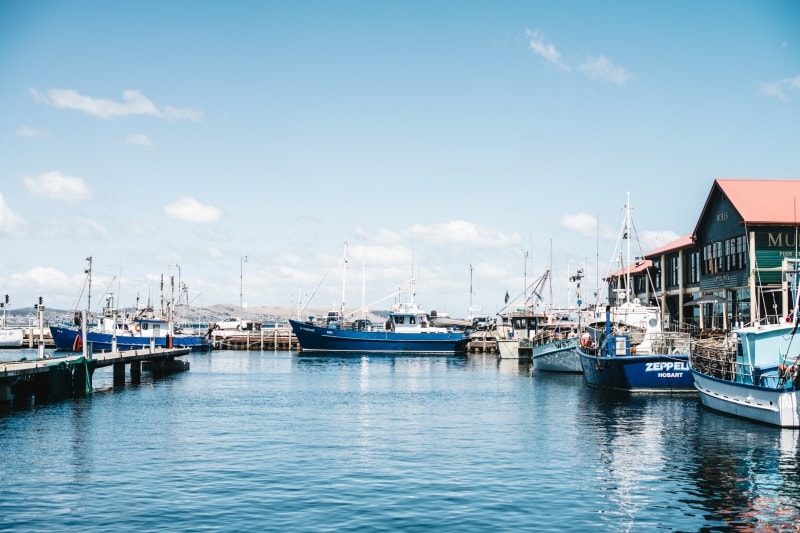
Ningaloo Discovery, Ningaloo Reef, Coral Coast, Western Australia © Tourism Australia
Wildlife events to catch in Autumn
March to May marks a flurry of animal activity in Australia. Spot everything from baby quokkas to mighty whale sharks.
Swim with whale sharks
Swim with whale sharks
Every autumn, one of the world’s largest groups of whale sharks roll into Ningaloo Reef in Western Australia to feast on krill and plankton. Autumn brings the perfect opportunity to take the plunge and swim alongside these gentle giants. You’ll not only experience these beautiful, serene fish up close, but you’ll also get to dive the reef to spot manta rays and turtles. There are a range of eco-certified tours to choose from, departing from Exmouth and Coral Bay.
Dive with manta rays
Dive with manta rays
Come autumn on Lady Elliot Island, the days are warm, the waters are inviting, and the manta rays are plentiful. This remote island on the Great Barrier Reef is one of the top destinations in the world to witness the magic of these graceful giants. Watch these large, tranquil fish feed, swim and clean themselves on a snorkel or dive tour and learn more about their individual spot patterns, habitat and unique behaviours.
See crocodile hatchlings
See crocodile hatchlings
Crocodile hatching season is in full swing in the Daintree Rainforest throughout autumn. Known for their fierce approach to motherhood, crocs carry each hatchling to the water after birth to care for them in a well-guarded “croc-creche”. Pack your camera for a rainforest river cruise with family-run FNQ Nature Tours, which offer small and private excursions to see these protective parents in action.
Wave to a million mutton birds
Wave to a million mutton birds
Every September, over a million short-tailed shearwaters (also known as mutton birds) make the three-week journey from Alaska to our southern coast, including along the Great Ocean Road and Phillip Island, to breed. After months of feasting and rest, the adults return in April, followed a few weeks later by their fluffy, grown chicks. You can watch the incredible spectacle from Cape Woolamai or the Mutton Bird Island Nature Reserve as great masses fill the skies at sunset.
Photograph a baby quokka
Photograph a baby quokka
As if a photo of a smiling quokka wasn’t cute enough, throughout April and May you may be lucky enough to spot a friendly quokka with a baby in tow. Like kangaroos, female quokkas carry their joeys (baby marsupials) in their pouch. Curious little joeys often poke their heads above the pouch or hop out for a stretch. The best way to see these Rottnest Island natives is to head out at dusk, moving quietly through grassy areas.
Spy a baby sperm whale
Spy a baby sperm whale
Down in Bremer Bay, on the southern coast of Western Australia, the world’s largest toothed predator dives for squid, sharks and fish. Throughout autumn, the gargantuan sperm whales, measuring up to 15m (49ft) in length, are also fostering their calves, travelling in pods and teaching the babies to dive and hunt. Naturaliste Charters operates whale-watching tours in the region, with chances of spotting sperm whales and orcas up close and personal in the wide-open ocean.
Hear a Tasmanian devil's call
Hear a Tasmanian devil's call
The story goes that early European settlers to Tasmania thought that screams heard coming from the bush were demons in hiding. It turns out it was Tasmanian devils during mating season, but the devilish name stuck. To experience these unnerving howls, growls and screeches, visit Devils@Cradle during mating season from March to May. See these carnivorous marsupials in action with an after-dark feeding tour.


























































































































































